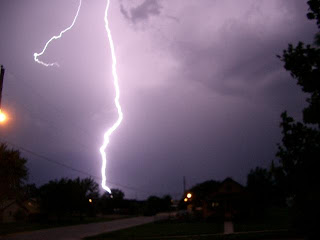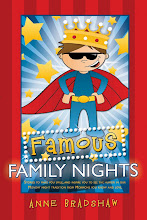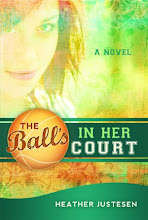
It was completely dark. Thunder rumbled as clouds slowly filled the valley and threatened rain. Suddenly, a lightning bolt flashed down from the sky, striking somewhere nearby, and a loud peal of thunder followed.
The night was moonless. Clouds growled and climbed over one another as they filled the valley. A jagged shard of liquid light shot from the underbelly of the roiling mass and touched down nearby, like a door to a much brighter world cracking open before slamming shut again.
In discussions I’ve had with readers and writers of LDS fiction lately, several of them have noted the same thing. Something is missing from many of the books currently being published, something that makes them not quite up-to-par with fiction published in larger market or at the national level in most genres.
Imagery.
What I’m hearing is that readers are not consistently seeing the kind of emotion-evoking description that they find in the highest quality writing. In many cases, manuscripts are being accepted because they tell a good story, are well-written, and follow the general rules of fiction. They just don’t have the spit-polished “dazzle” that lights up what readers consider to be “great writing”.
In the first of the passages above, the description is pedestrian. There’s nothing new or interesting about any of the words. Almost all of them are everyday terms that could be used in a middle-grade book without anyone scrambling for a dictionary. It describes a thunderstorm in a way that’s been used a thousand times. The word “suddenly” may be one of the top 10 most overused words in all fiction.
The second passage is more original. We don’t normally think of clouds as associated with verbs like “growl” or “climb” but they create the picture. I don’t know if I’ve ever seen a lightning bolt described as “a jagged shard of liquid light”, or the image of a lightning bolt as a cracked-open door to another world. The words used are not obscure or overstuffed with syllables, but they are fresh and seldom used in this context.
How do we improve our descriptive images without adding substantially to our word count or alienating the reader with obscure words? One answer is to read more high-quality published fiction. Reading is how I best acquire new words, not by repeating vocabulary lists or perusing the dictionary. Of course, occasionally I’ll run across one that I can’t decipher from the context, and have to look it up. I’m okay with that as a reader. As a writer, I should stick with words that I already own, however limited my vocabulary may be, and not scramble for reference books. Too much word research could result in inappropriate usage that puts off editors and annoys readers. Researching words while reading, on the other hand, is more like a basketball player doing layup drills and practicing free throws: It gets me ready for the game.
While drafting, I don’t worry much about word choice. Since I’m going to re-write and revise several more times before submission, why bog myself down debating between “green” and “verdant”? But on that final or next-to-final run-through, you can bet I’ll be searching my cerebral archives (not Webster, if I can help it) for the best descriptive words in each sentence. I’ll look for simile opportunities to replace flat description, and strong verbs to replace weak adverbs. I’ll ask myself questions like, “Have I already used this word too many times? Is there another word or phrase that says it better?” I’ll often use my word processor’s “search” function to count how many times a certain word or phrase appears, and that task has saved me much of the embarrassment of repetition.
Of course, you might disagree with my assessment of the two passages above. You might be thinking the second passage is TOO wordy, and that the first one is better for most readers in most situations. In a recent review, my first novel was criticized as being "weighty" in its description. I’ll admit, I love words, and if I’m not careful I’ll use most of the ones I know in every story. I may not be your best role model when it comes to this subject.
How do you feel about your own vocabulary, and the way you use it? Do you always have a dictionary and thesaurus nearby, or do you trust what’s in your head, at least in the drafting stage? What processes do you use to make sure you are creating the best imagery possible with your word choices?
Wednesday, January 26, 2011
Style and Substance
Posted by Michael Knudsen at 5:01 AM
Labels: editing, Michael Knudsen
Subscribe to:
Post Comments (Atom)

















3 comments:
Excellent post Michael. I don't have use reference guides when I write or revise.
I agree that good description can make a story pop but it should be used judiciously. No one cares about a tube of toothpaste, no matter how original the description. And of course bad description will bore a reader to the point that they start skimming paragraphs or even pages
I think punching up verbs is the best way to improve description. I definitely need to work on that! I do use my in-computer synonym searcher, but I would never use a word I didn't recognize right off the bat.
Anyone who reads your book will realize your vocabulary is quite extensive!
This quote came to mind-
"The difference between the right word and the almost right word is the difference between lightning and a lightning bug." Mark Twain
When you hit the mark with good imagery it really makes the writing sing - but if you push the envelope too far it has the opposite effect, distracting the reader as they try to decipher what you are trying to describe.
As for me, I strive for a balance between beauty and pacing the story. It's rare that I turn to a thesaurus or dictionary.
Post a Comment